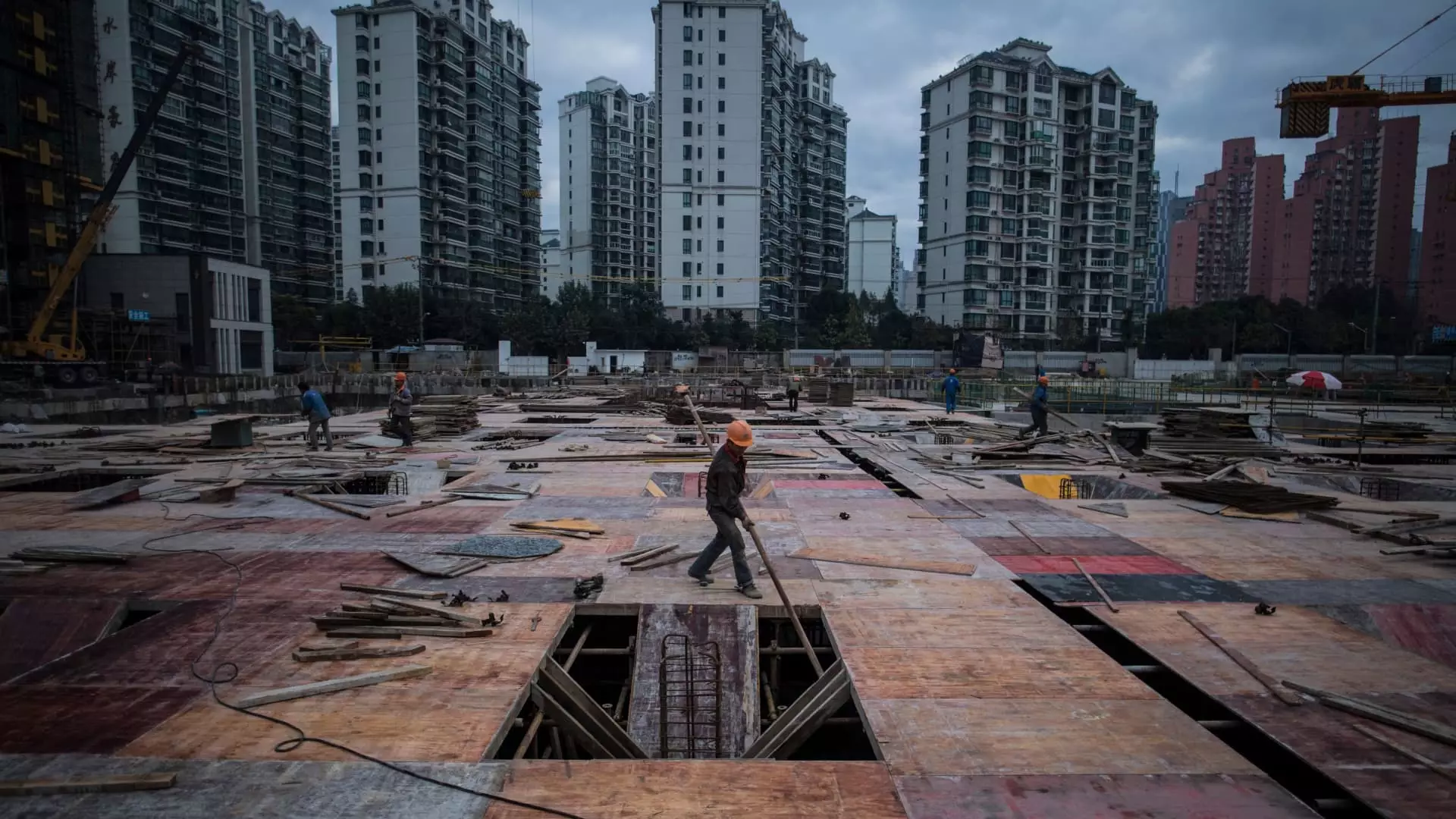Over the past few years, China’s property market has faced a considerable downturn, fueled by various economic and regulatory challenges. This sector, once seen as a robust pillar of economic growth, is now grappling with a myriad of issues including unsustainable debt levels among property developers, excess inventory of unfinished homes, and diminished consumer confidence. In a bid to rejuvenate the struggling property market, the Chinese government has unveiled a series of stimulus measures. However, analysts remain skeptical about whether these initiatives can effectively reverse the ongoing decline.
Recent reports indicate that stimulus measures have had a slight positive impact, particularly during the week-long Golden Week holiday where home sales witnessed an impressive increase in certain regions. For instance, Beijing recorded an astounding 81% increase in average daily sales based on floor area compared to the same period last year. Such significant gains in a key city do signal a potential bump in consumer sentiment, which could set the stage for recovery. Nevertheless, when viewed in a broader context, these statistics paint a less rosy picture. The nationwide average for daily transactions of new homes fell by a staggering 27%, suggesting that the positive effects were not reflective of the overall market health.
Despite the positive developments in Beijing, large cities such as Shanghai, Guangzhou, and Shenzhen experienced sharp declines in sales, with drops of 61%, 59%, and 57%, respectively. The contrast in performance underscores the unevenness of the recovery efforts across different urban centers.
The underlying issues troubling the real estate market—such as the extensive debt burdens faced by developers and the overwhelming stock of unsold homes—remain unaddressed. Analysts are calling for more substantial reforms in the sector to prevent further instability. According to William Wu from Daiwa Capital Markets, the recent stimulus is unlikely to yield lasting changes without more aggressive policies aimed at stabilizing the market long-term. Moreover, Shen Meng, a director at Chanson & Co., emphasizes the need to analyze sales figures over longer periods to accurately measure the policies’ effectiveness.
One only needs to look at the patterns of home sales during the Golden Week over the past few years to understand the systemic decline. From averaging 177,000 square meters sold in 2021, to only 107,000 this year, the downward trend is undeniable and alarming. It raises the question; can the current strategy lead to meaningful transformation, or will it just delay the inevitable?
Industry experts are suggesting that boosting homebuyer sentiment through reduced mortgage rates, lower down-payment ratios, and increased purchase quotas is merely a starting point. A comprehensive approach addressing the substantial excess inventories and unfinished projects is essential if the sector is to recover sustainably. Kenneth Ho from Goldman Sachs articulated a need for more targeted government strategies to effectively manage these excess inventories.
Unfortunately, there seems to be a lack of urgency from the authorities to implement these necessary reforms, which could cement the ongoing struggles for both developers and buyers alike.
As the Chinese property market navigates this precarious phase, the recent stimulus measures offer a fleeting glimmer of hope. However, the deep-rooted issues and broad disparities in market performances remain significant barriers to recovery. Analysts highlight a shared sentiment: without radical policy changes aimed at fostering a more resilient real estate ecosystem, the current improvements may ultimately be superficial. As the market stands, it seems that the challenges are far from over, leaving stakeholders to ponder the future of one of the world’s largest property markets. The road ahead necessitates a well-rounded approach that prioritizes both short-term gains and long-term sustainability if recovery efforts are to yield genuine, lasting results.


Leave a Reply